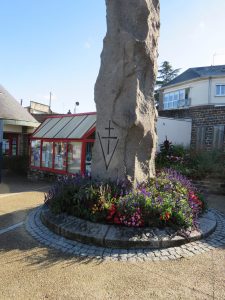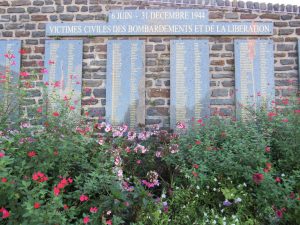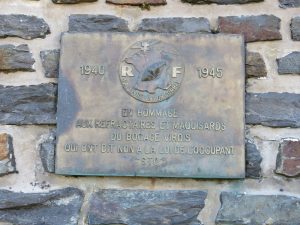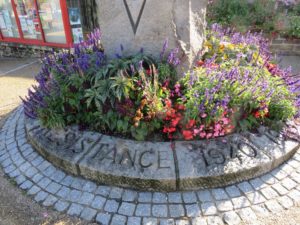
Memorial at Vire, Normandy
Vire, Normandy, France
“If I sleep for an hour, thirty people will die …” Adolfo Kaminsky fought against sleep. A master forger, “Monsieur Joseph”, as Kaminsky was known, could produce thirty blank documents in an hour; thirty false documents to save the lives of thirty Jews. He was part of and assisted by French resistance fighters. Kaminsky could even produce Swiss passports thought to be impossible to copy.
His parents were Russian Jews who had met in Paris in 1916 after fleeing pogroms. Theirs was a common story among many Jewish families, of exile and displacement. They managed to escape to Buenos Aires, Argentina where Adolfo was born in 1925. When he was seven years old the family moved back to France settling in Vire, Normandy by 1938 when he was 13 years of age.
However, disaster followed the family again. After the German invasion of France in 1940 the Kaminsky house in Vire was taken over by the Germans. Once again they were obliged to move quickly, into a different dwelling. Living in Nazi occupied France, thrown into a concentration camp, but reprieved because of intervention of the Argentines, he narrowly escaped the horrors of Auschwitz. Adolfo Kaminsky joined the French Resistance in 1943. In Paris he forged documents due to his expert chemical knowledge of dyes. He reportedly forged papers that saved the lives of more than 14,000 Jews.

Victimes Civiles des Bombardments et de la Liberation (Civilian victims of bombings and liberation)
Living in Vire also were French civilians Auguste, Gerard and Madeleine Guerin, Yvonne Hardy, Paul Lambert, Louis and Magloire Lemaitre, all names familiar in Ballarat, Victoria Australia because many years previously, ancestors with these surnames had travelled to and settled on these Australian goldfields. Julien Hardy, for example, a stonemason who was born around 1831 in Saint-Michel-de-Montjoie a mere 15 minutes from Vire, was the official discoverer of gold at Happy Valley, Victoria. Collecting the reward from the Colony of Victoria he bought land and owned a granite quarry at Warrenheip, working huge granite blocks by his own labour. Some, because of their superior quality, were used in building the Town Hall, Ballarat.

I gave a good fight. In tribute to the refractories and maquisards of the bocage virois who said no to the law of the occupant “sto”
The names mentioned above, and many others, are on the memorial dedicated to “Victimes Civiles des Bombardments et de la Liberation (Civilian victims of bombings and liberation) dated 6 June to 31 December 1944. It is estimated ( Henri Amouroux, La Grande histoire des Français sous l’Occupation, volume 8) that the bombings in Normandy in the latter half of 1944 caused over 50,000 civilian deaths. These people, innocent civilians, were victims too, caught up in allied bombings that wiped out families and destroyed entire cities like Vire. This memorial also recognises those who fought in the French Resistance from the city of Vire (Marquis refers to the French Resistance Movement during German occupation: 1940-45). It also refers to the surrounding district (bocage virois is translated as ‘pastureland divided into small hedged fields interspersed with groves of trees’). A fitting tribute to the brave men and women who fought against oppression, this memorial reflects the ideals of liberty, equality and freedom.
